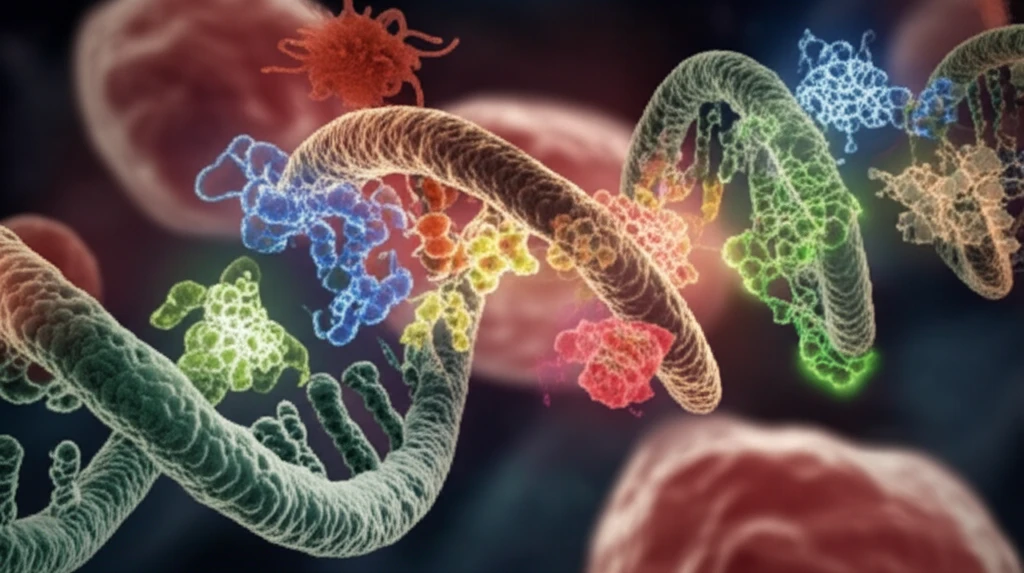
Unlocking Cancer's Secrets: How 'Junk' DNA Influences Tumor Growth
"Scientists discover a surprising link between LINE-1 RNA and a key protein, potentially paving the way for new cancer treatments."
Cancer remains a leading cause of death worldwide, prompting researchers to explore every avenue for potential treatments. While much focus has been on genes that directly cause cancer, scientists are increasingly interested in the role of non-coding DNA, sometimes referred to as "junk" DNA. This "junk" may hold crucial clues to understanding and combating the disease.
One such area of interest is LINE-1 (Long Interspersed Nuclear Element-1), a repetitive sequence that makes up a significant portion of the human genome. Although initially thought to be inactive, LINE-1 RNA has been shown to play a role in various cellular processes, including cancer development. Researchers are now investigating how LINE-1 RNA interacts with other molecules in the cell to influence tumor growth.
This article delves into recent research that uncovers a novel interaction between LINE-1 RNA and a protein called PSF (Polypyrimidine tract-binding protein-associated splicing factor). This interaction affects the expression of a gene called GAGE6, which is linked to cell proliferation and tumor formation. Understanding this complex relationship could open new doors for targeted cancer therapies.
LINE-1 RNA: From 'Junk' to Key Player in Cancer Development

The study, published in Experimental and Therapeutic Medicine, investigated the role of LINE-1 RNA in lung cancer cells. Researchers focused on how LINE-1 RNA interacts with PSF, a protein known to regulate gene expression. Their experiments revealed a direct binding between LINE-1 RNA and PSF.
- Binding to PSF: LINE-1 RNA specifically binds to the RNA-binding domain of PSF.
- Releasing GAGE6: This binding releases the GAGE6 promoter region, a key area that controls GAGE6 gene expression, from the DNA-binding domain of PSF.
- Increasing GAGE6 Transcription: The release of GAGE6 leads to increased transcription of this gene.
- Promoting Cell Proliferation: Elevated GAGE6 levels promote cell proliferation and colony formation, both hallmarks of cancer.
Implications and Future Directions
This research sheds light on the complex role of LINE-1 RNA in cancer. By demonstrating a direct interaction between LINE-1 RNA and PSF, and its subsequent impact on GAGE6 expression, the study unveils a potential mechanism driving cancer cell proliferation and tumor formation.
These findings could have significant implications for the development of new cancer therapies. Targeting the LINE-1 RNA/PSF interaction could offer a novel approach to controlling cancer cell growth. Further research is needed to explore the therapeutic potential of this pathway and to identify specific drugs that can disrupt this interaction.
While this study focused on lung cancer cells, the LINE-1 RNA/PSF interaction may also play a role in other types of cancer. Future studies should investigate the prevalence and significance of this mechanism in various cancer contexts. Ultimately, a deeper understanding of LINE-1 RNA's role in cancer could lead to more effective and targeted treatments, improving outcomes for patients.
